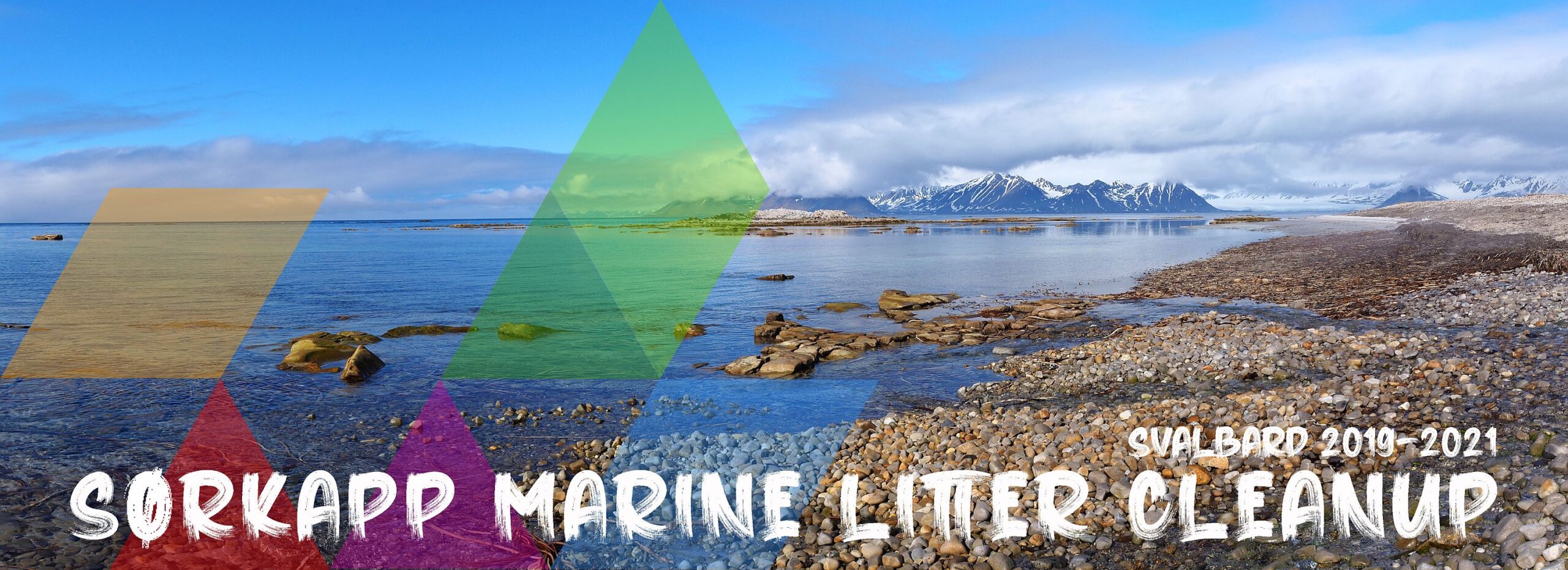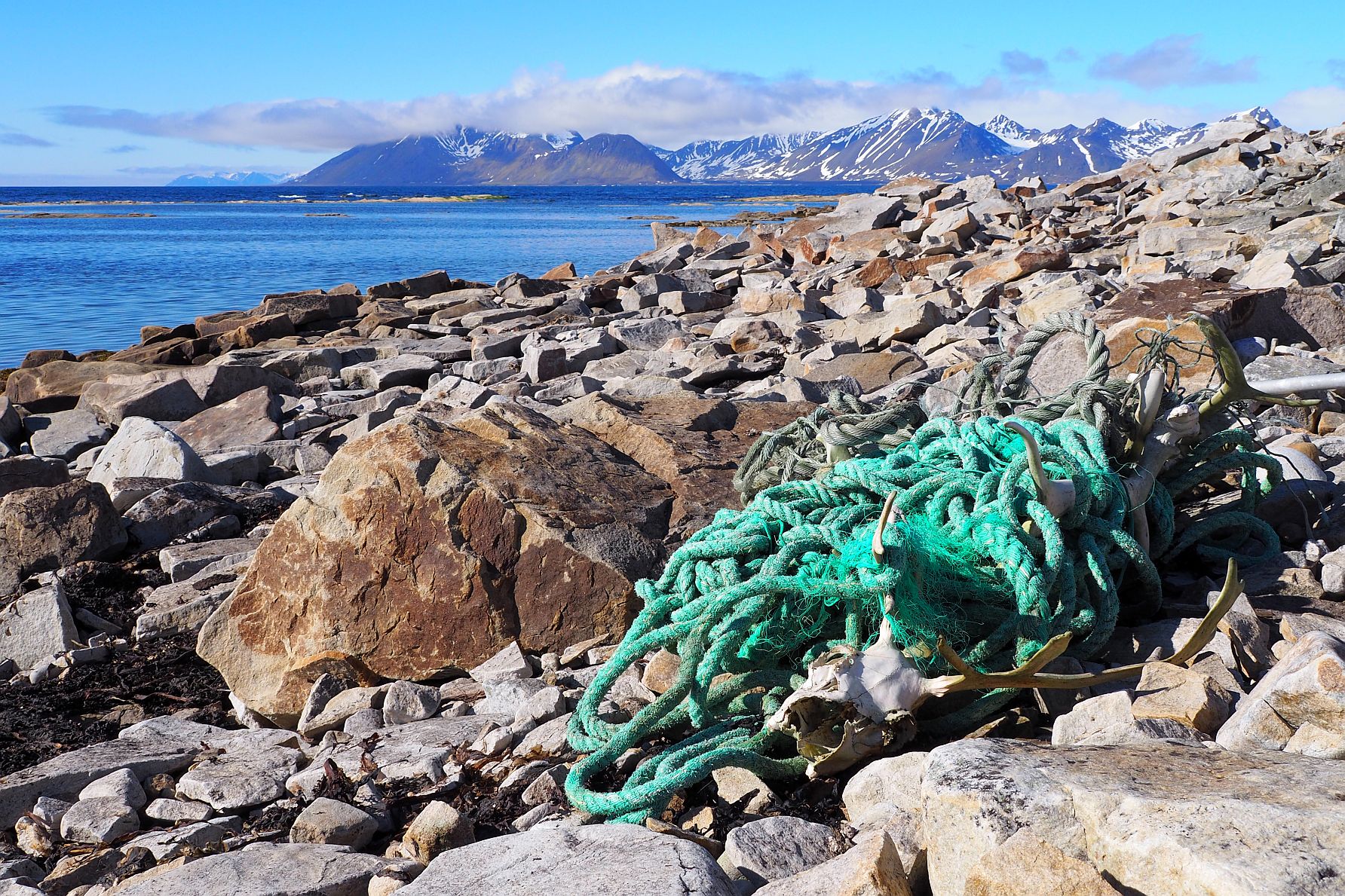Seas and oceans have served humanity as rubbish dumps for hundreds of years, but initially it wasn’t much of a problem. As recently as at the end of the 18th century, there were merely 1.5 billion of us and the majority of rubbish we generated was made of natural materials, which biodegraded over time. Today human population is five times as numerous and much of the 2.5 billion tons of waste produced annually all over the world is made of plastic, which does not biodegrade. Due to numerous flaws in the existing waste management systems, human carelessness and, all too often, plain stupidity, every year almost 10 million tons of rubbish end up in the world’s oceans.
Your rubbish too is likely to be among the lot, even if you have never been at the seaside or deliberately thrown litter in a nearby river. How is that possible? It only takes a gust of wind to blow a piece of rubbish out of a bin or a passing garbage truck onto the street, from where, through a storm drain, it can easily get into the nearest river and on into the sea, where – due to ocean currents – its journey is only about to begin. The items which end up heading northwards, reach the “dead end” of the Arctic in less than two years. And that’s where they usually stay.
Before you’re overwhelmed with guilt, however, we’d like to stress that not all litter washed ashore on remote Arctic beaches gets there from Europe. Much of it comes from vessels operating around Svalbard, in the Greenland and Barents Seas. They include tourist cruisers, research vessels and private yachts, but it’s not them that pose the most serious problem. The main culprit and, at the same time, the second largest source of beach litter in the region are fishing vessels, which we’ll return to in a while.
GLASS (50 kg)
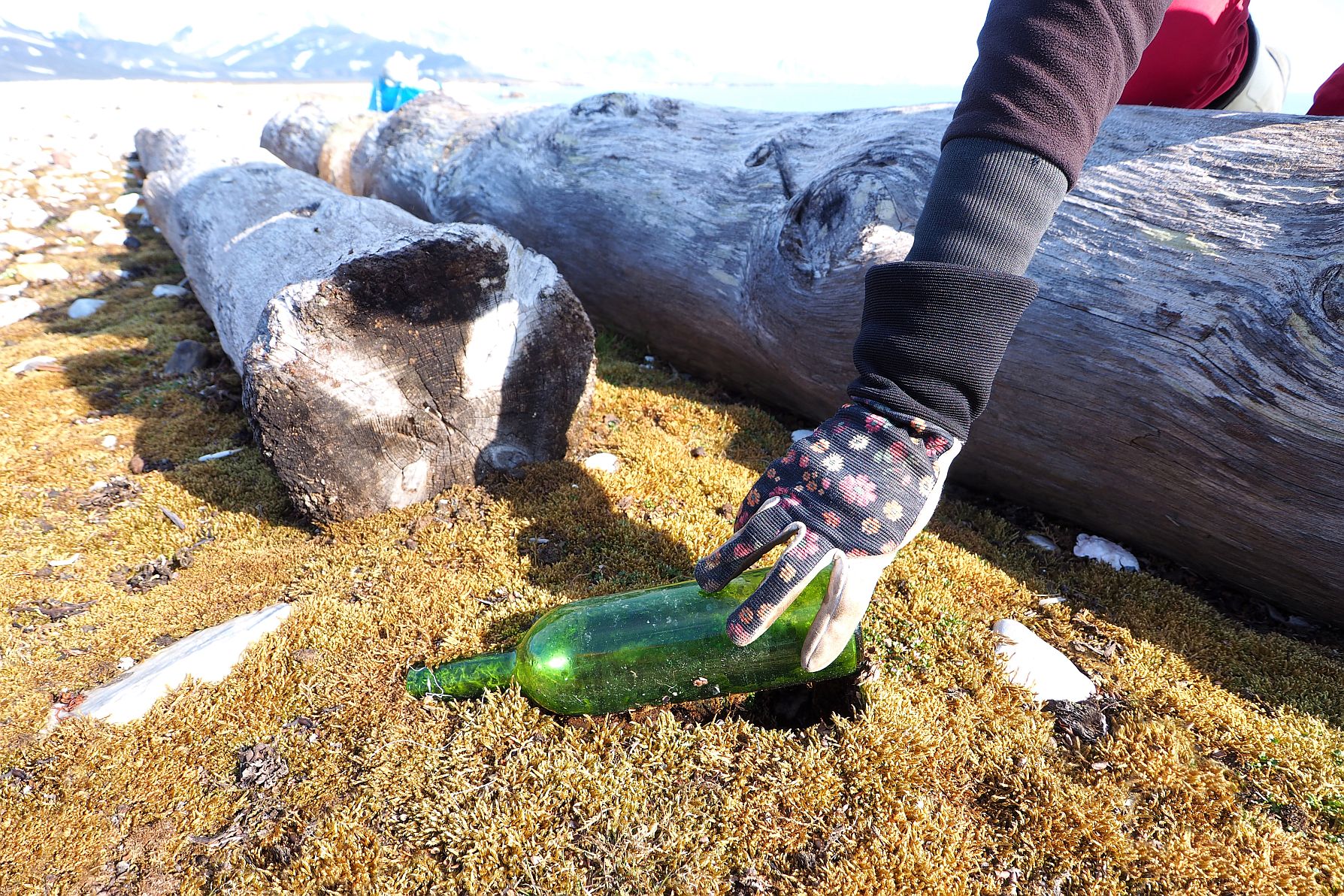
Glass on the shores of Sørkappland.
© Adam Nawrot, forScience Foundation
Glass made up the smallest part of all the litter we collected. It was mainly bottles, some of them shattered due to a rough landing on the stony beaches of Spitsbergen.
To make it to the shore, a glass bottle must be intact. If cracked, it will soon fill up with water and sink to the bottom. So will most of those that have fallen in the sea without a cork or a cap. For us, though, the caps played another important role. The information they contained made it possible to conclude that many of the bottles scattered along the coast of Sørkappland have once held beverages of the more potent kind, often brewed and bottled in Russia. Bearing in mind the widespread availability of Russian vodka, however, it is not at all certain that it’s the Russians that are to blame for the bottles’ presence in the Arctic.
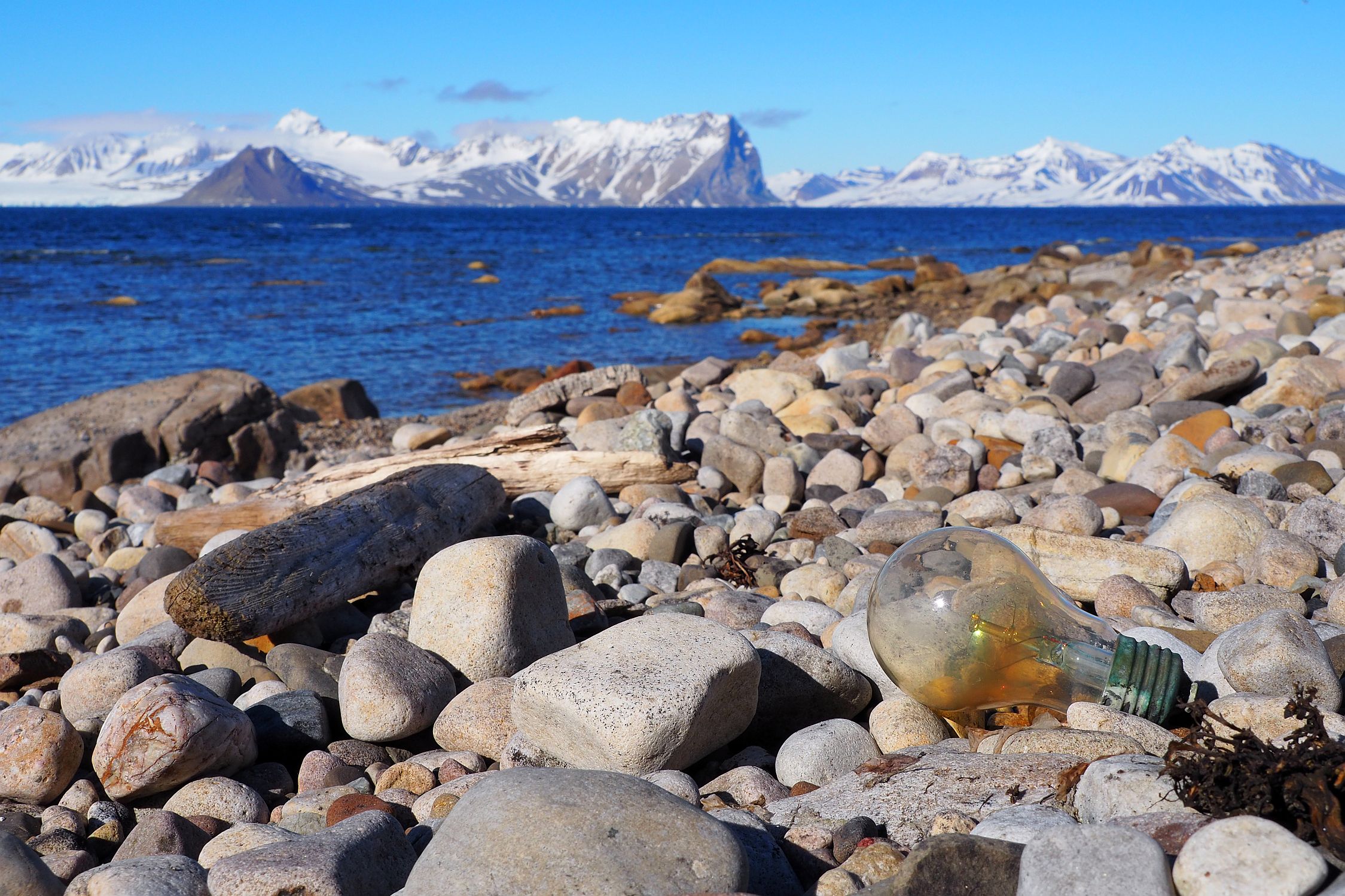
Apart from bottles, we regularly came across light bulbs.
© Barbara Jóźwiak, forScience Foundation
Even though the methods used for extracting sand for glass production are not neutral to the environment, and the production process itself requires tremendous amounts of energy (and thus causes high emission of greenhouse gases), glass is relatively safe, even if – for whatever reason – it ends up on an Arctic beach. Still, it is one of the most durable materials produced by man. The amount of time needed for glass to decompose to the point where its fragments cannot be distinguished from regular grains of sand may be as long as 4000 years!
METAL (400 kg)

The oldest buoys were losing their battle with corrosion.
© Barbara Jóźwiak, forScience Foundation
When it comes to metal1A massive metal cylinder found on one of the beaches brought the total weight of litter in this category up to an astonishing 1400 kg! We will not describe the item here, however, as we believe it deserves a post of its own., one of the most frequently encountered type of beach litter was buoys. The oldest of them were losing their battle with corrosion. The more modern ones, made of corrosion-resistant aluminium alloys, were doing a lot better, although they too had clearly seen better days. The material they are made of does not rust, but slowly turns into powder. As a result, the buoys become rough to the touch and, over time, holes appear in their surface. Sooner or later they will surely disintegrate completely, but we don’t know how long it may take and if the process is neutral to the environment.
If we’re to go by the information given in the report from last year’s edition of Svalbard Beach Litter Deep Dive project, the buoys found on the beaches have not been dumped on purpose. They’re usually lost, often during violent storms that regularly sweep across the Arctic. Deliberately thrown away are only damaged buoys, which invariably sink to the bottom before the reach the shore.

A rusty metal cylinder containing leftover chlorodifluoromethane.
© Barbara Jóźwiak, forScience Foundation
Although metal itself is not particularly dangerous for the environment, the content of metal containers may turn out to be very much so. Metal cylinders are used to store substances such as refrigerants, which leak out once the metal walls of the container have sufficiently corroded. And although refrigerants are not normally toxic for living organisms, they do display a high global warming potential and deplete the ozone layer.
SYNTHETIC MATERIALS (2200 kg)
The most common of all litter categories was plastic litter. The beaches of Sørkappland were strewn with all sorts of things, from cotton-swab sticks and broken toys, through packaging from food products and cosmetics, to crates and half-full canisters (which, depending on their content, were sometimes classified as dangerous items).
Among them were numerous objects, which many of you would probably put into separate categories, but which are, in fact, also made of plastic. Take, for example, rubber products.
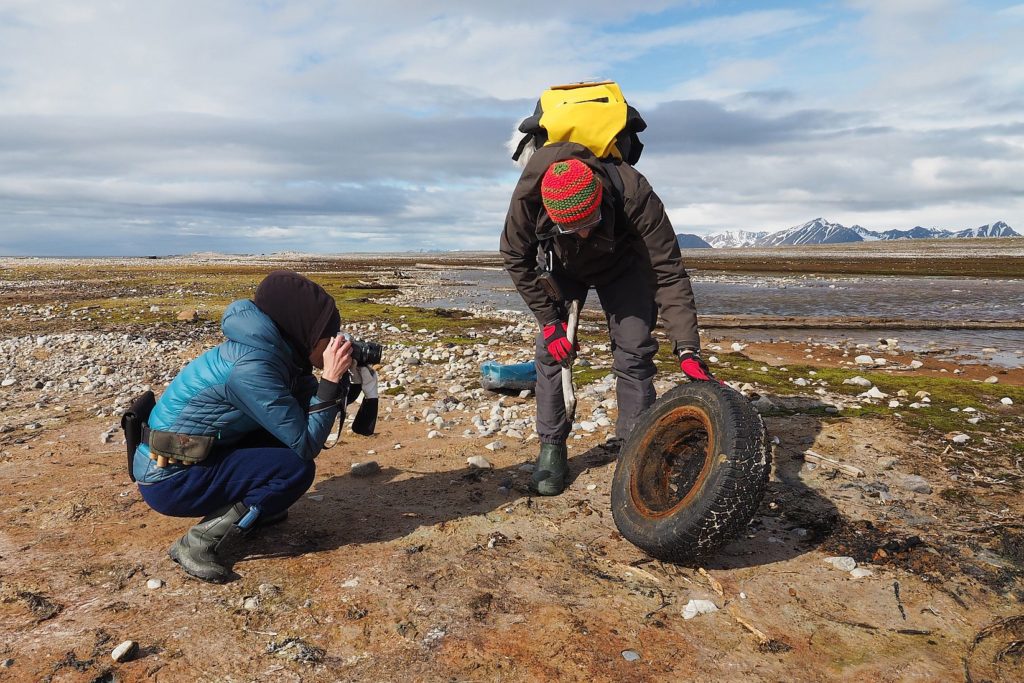
On one of the beaches we found two car wheels, one on which had been made in Sweden and the other – in Canada.
© Joanna Nawrot, forScience Foundation
Rubber is a generic term denoting a whole range of different materials, whose properties depend on the type and number of ingredients used at the production stage. In the past, the ingredients were natural. Nowadays, the vast majority of rubber products we come across in our daily lives are made of synthetic rubber, which is produced in chemical plants from petroleum by-products. In other words, modern rubber is a man-made, synthetic material and causes the exact same problems as its synthetic cousins – instead of breaking down completely (biodegrading), it only breaks into smaller and smaller pieces.
Rubber is used to produce a wide variety of products, from car tyres and gaskets to protective clothing and waterproof footwear. To our surprise, on the beaches of Sørkappland we found representatives of all these types of items.
Another, seemingly distinctive group of beach litter was ropes and fishing nets, which have, over the last few decades, undergone a transformation much like the one experienced by rubber products. Natural fibres, which ropes and nets were traditionally made of and which served their purpose brilliantly for hundreds of years, have been ditched for the sake of synthetic fibres. They are cheaper, more resistant to weather conditions and mechanical damage, and – as an added bonus – many of them float. It is therefore no wonder that they eventually replaced their biodegradable predecessors. The problem is that their greatest merits become a serious complication the second a synthetic rope or net is lost or discarded. Why? Floating in the sea, the nets keep on fishing, killing vast numbers of animals and damaging the marine environment.
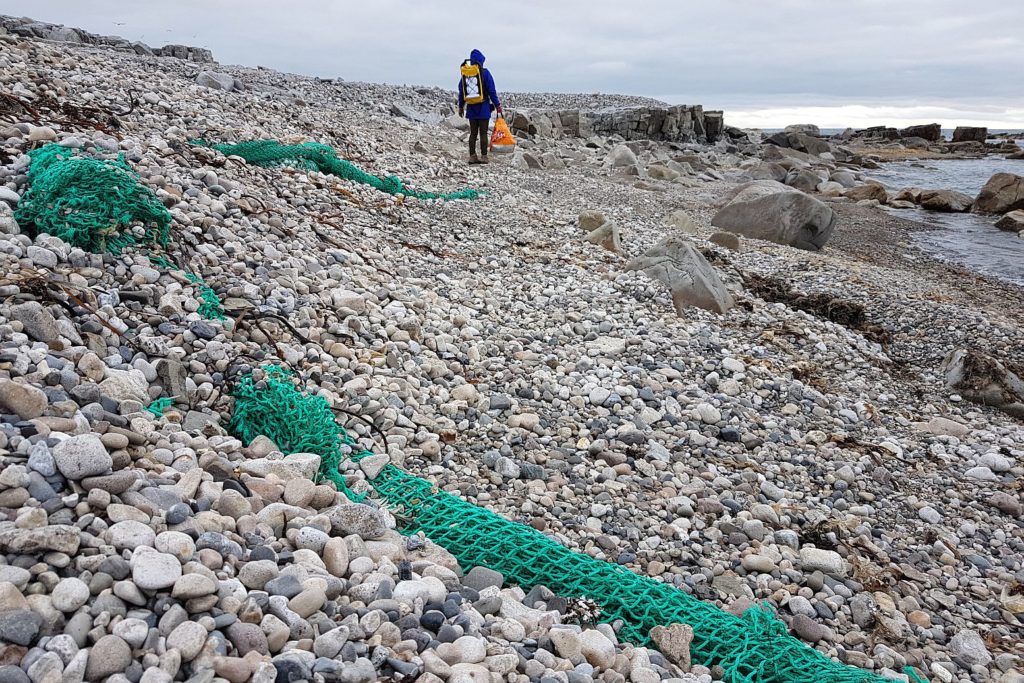
Digging the net from under the rocks turned out to be a serious challenge.
© Joanna Nawrot, forScience Foundation
Abandoned ropes and fishing gear drifting with the currents are also potentially dangerous for yachts and ships, and thus for people. A rope tangled around a propeller is a serious issue, especially up in the north, where water temperature makes DIY solutions problematic and the weather is notoriously fickle.
It might seem that the negative impact of this type of litter would be diminished on land, but the reality is less optimistic. Even beached ropes and nets pose grave danger to local wildlife.
An all too common sight along the coast of Sørkappland was reindeer antlers tangled in ropes or fishing nets. In some cases we found skulls too, and sometimes even spines, which bore grim testimony to their owners’ tragic fate. If you’re wondering what is it that reindeer look for in fishing nets and why it so often ends in disaster, you’ll find the answers in the post entitled Whatever it takes.

Modern ropes are incredibly strong. Even the strongest reindeer won’t manage to break them.
© Barbara Jóźwiak, forScience Foundation
What puzzled us was why the majority of reindeer were tangled in twos. We came up with a few theories (including one or two inspired by bad horror films), but the actual answer turned out to be much more prosaic. Imagine a reindeer which has just got its antler caught in a fishing net. It’s standing on the beach, with its upper body close to the ground, tossing its head wildly in a desperate attempt to free itself (which probably has the exact opposite effect). Chances are it’s making strange noises and stomping its feet in the process. Can you see that? Reindeer can see that too, but to them it looks more like a challenge and often leads to a scuffle which, in turn, leads to… well, precisely… reindeer getting fatally tangled in twos.
As we’ve already mentioned, much of the litter found along the beaches of Svalbard comes from fishing vessels. It’s not only buoys, ropes and nets, but also a whole range of less obvious items, like plastic packaging from food products, detergents and cosmetics. You’re wondering what that’s got to do with fishing? Fishermen, like the rest of us, eat, do their chores and take care of themselves. In theory, the packaging might have been thrown away by anyone, but – bearing in mind that the majority of fishing vessels operating in this part of the Arctic are Norwegian or Russian, and that their crews consist mostly of men – it seems like a strange coincidence that of all the litter items that could be identified by labels most came from Norway or Russia and, in the case of cosmetics, were meant for men. What worries us more than the origin of the litter, however, is the fact that many of the objects we came across are only ever used below deck, as this suggests that they ended up in the sea on purpose rather than by accident2The information we’re sharing with you in this post is not based solely on our own observations. Much of it comes from analyses conducted last year as part of the project known, for short, as Deep Dive. If you’re curious what else the Deep Dive folk managed to find out, read the full report..
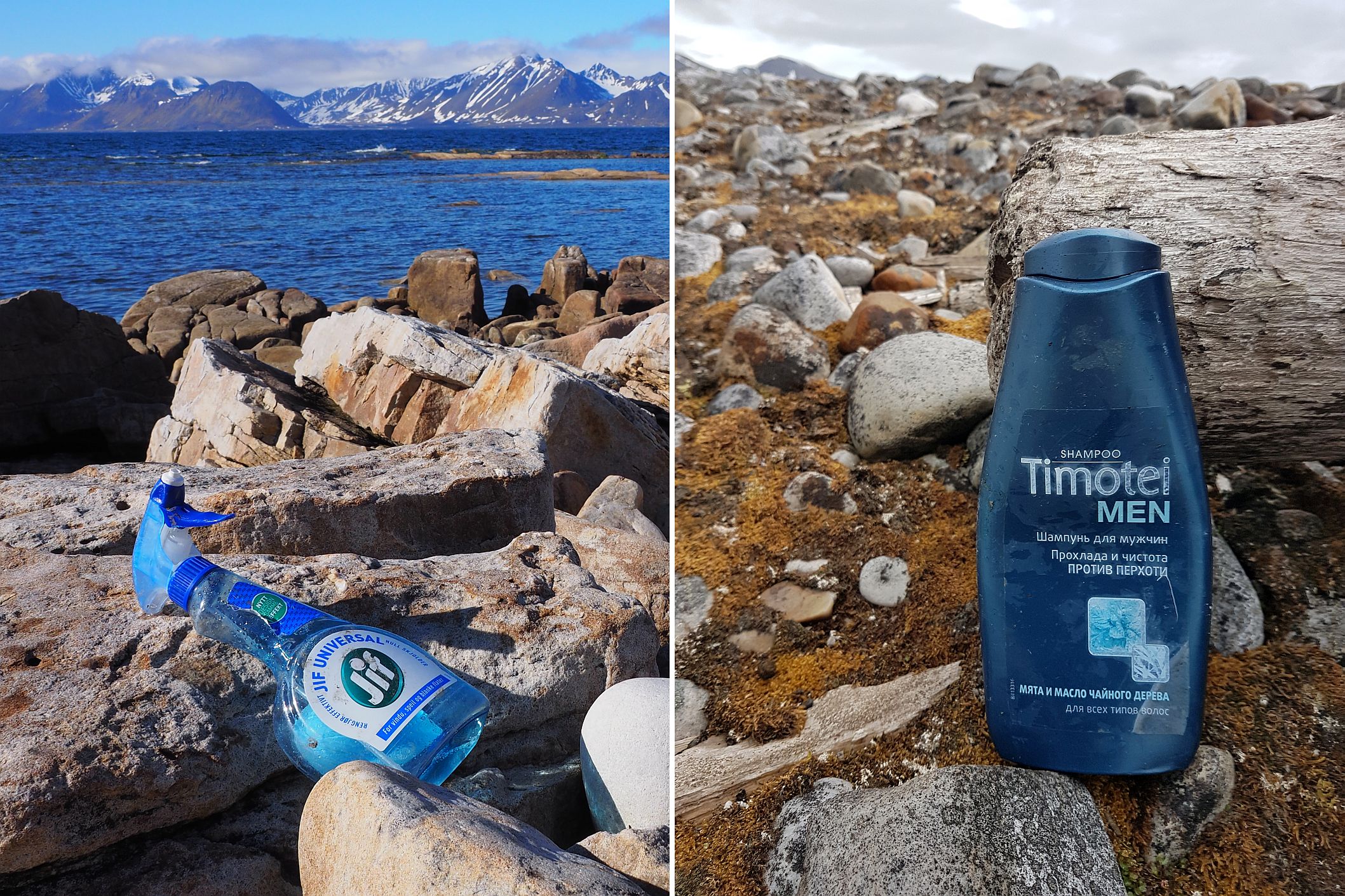
Ropes, nets and buoys are not the only types of litter that come from fishing vessels operating in the area.
© Barbara Jóźwiak / Joanna Nawrot, forScience Foundation
Before you mentally chide the fishermen and dismiss the problem of beach litter in the Arctic as having nothing to do with you, we’d like to stress that plastic packaging bearing legible labels was a rarity in Svalbard. The origin of most plastic items we collected remained unknown, but there’s ample evidence to suggest that they had travelled to the Arctic from Europe.
What’s also worth keeping in mind is the indirect impact we exert on the Arctic with our choices. Take notice of where the fish you eat comes from. Those caught in polar waters are usually in high demand as they are generally considered to be superior in terms of quality. They are also a valuable source of Omega-3 fatty acids, which are a popular ingredient of dietary supplements available on the market. By buying them, we support the fishing industry, which – as we’ve already mentioned – is one of the main sources of litter found along Svalbard’s coast. Consequently, the blame for its sorry state lies with us too.
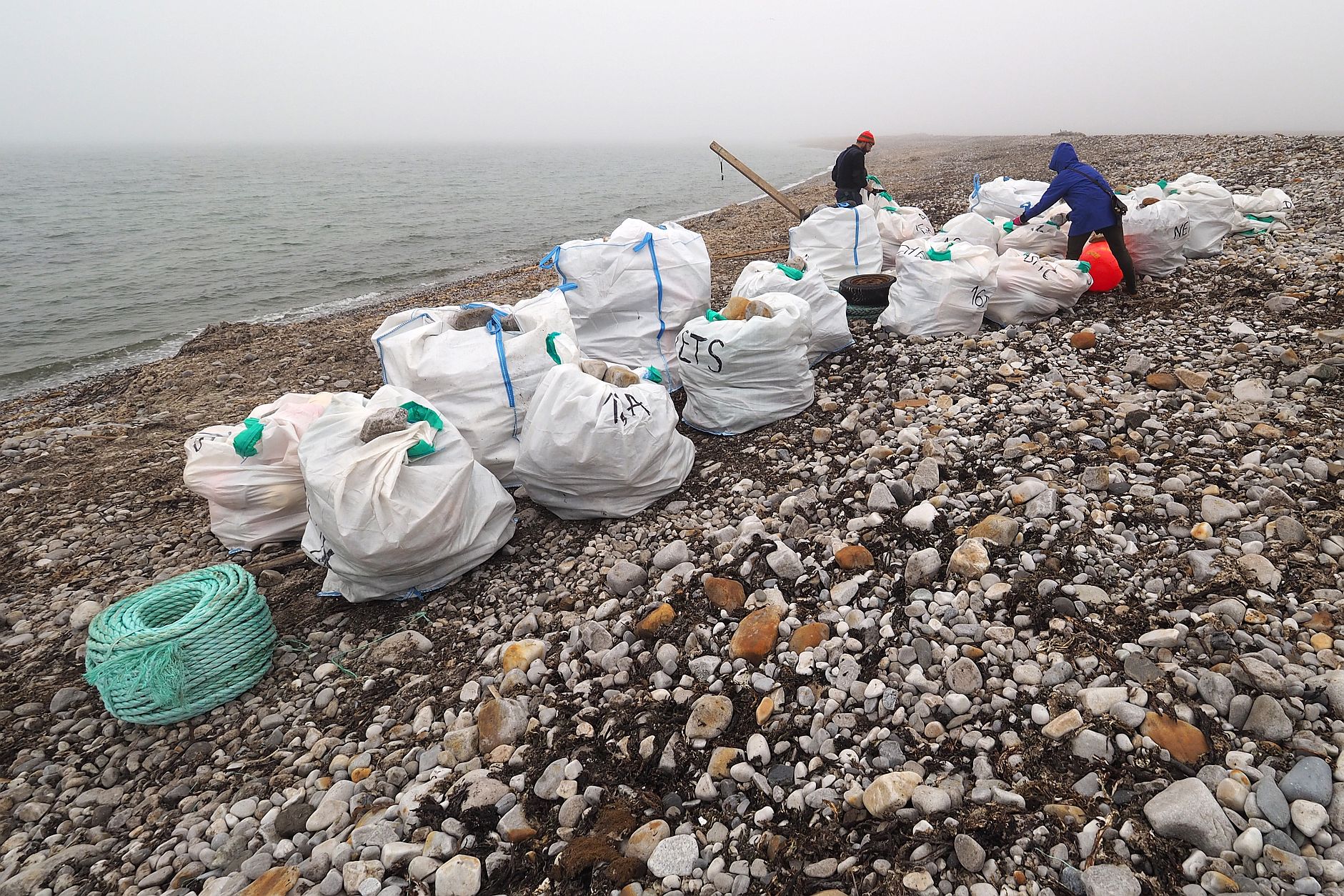
Sorted and packed, the litter was transported to the Polish Polar Station Hornsund and then to Longyearbyen, where it was taken care of by the local waste management facility.
© Joanna Nawrot, forScience Foundation
The amount of litter on the beaches of Sørkappland exceeded our most pessimistic expectations. Even though direct human impact in the area is limited to the minimum, from a 15-kilometre stretch of the beach, which we focused on this year, we removed almost 4 tons of rubbish. It is, on average, 250 kg from every kilometre of the coastline, of which the entire archipelago has over 3500 km!
To make things even worse, according to official estimates the litter which washes up on the s makes up a mere 5% of all marine litter found in the world’s oceans. An overwhelming majority of it (95%) sooner or later sinks to the bottom, where it is just as dangerous to the ecosystem and infinitely more challenging to remove.
Litter pollution of such a remote and relatively unspoilt area as the Far North serves as another piece of evidence that continuing economic growth and the associated lifestyle will soon lead to a global ecological disaster. What we need are radical changes to the system, but before they occur, let’s remember that major changes often start with small acts of resistance. Contrary to what many people think, every little bit helps. Every plastic bag or drinking straw we do not use, every leek we buy loose rather than wrapped in cling film on a polystyrene tray, and every new “super product” we resist knowing that, in fact, we don’t really need it at all. It is worth keeping in mind especially now, with pre-Christmas shopping craze at its very peak.


